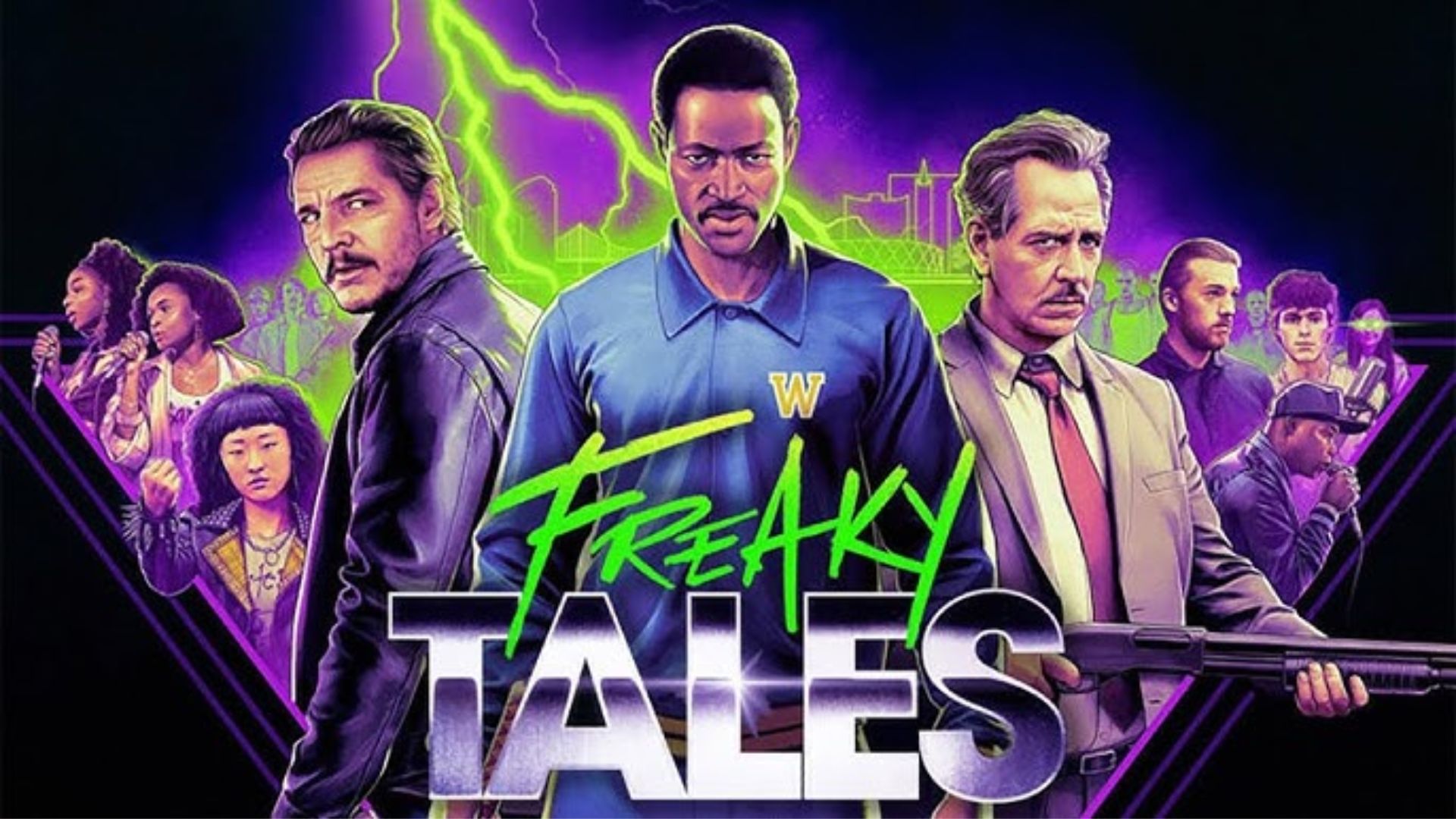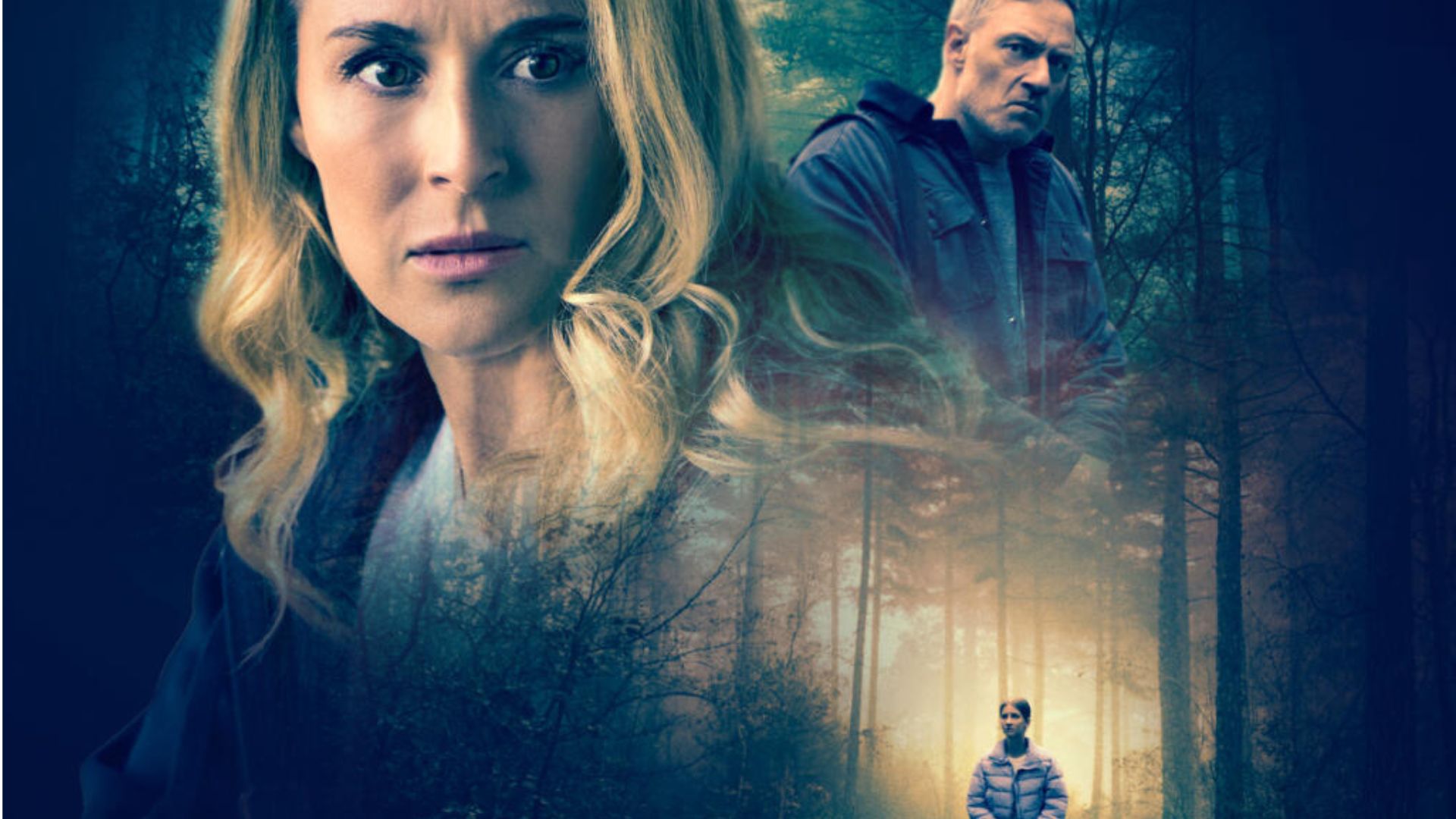Freaky Tales is a 2025 action-comedy film set in 1987 Oakland, California, directed by Anna Boden and Ryan Fleck. The movie unfolds through four interconnected stories, blending action, humor, and supernatural green energy, referred to as green lightning, that pulses through the city. The tales follow teen punks Lucid and Tina, rap duo Danger Zone (Entice and Barbie), debt collector Clint, and NBA star Sleepy Floyd.
Each story captures Oakland’s vibrant subcultures—punk, hip-hop, and sports—against a backdrop of racism and crime, with neo-Nazis and a corrupt cop, The Guy, as antagonists. Narrated by rapper Too $hort. Starring Pedro Pascal as Clint, Ben Mendelsohn as The Guy, Jay Ellis as Floyd, and Normani as Entice.
The green lightning is a mysterious, glowing energy that appears in characters’ eyes, microphones, or surroundings, enhancing their courage or abilities. It’s described as Oakland’s “special juice,” symbolizing the city’s cultural spirit and resilience. Its real meaning lies in representing the collective strength of Oakland’s underdogs, uniting them against oppression in a vibrant, nostalgic tribute to the era.
The Punk Rebellion and Green Energy

The first story of Freaky Tales centers on Lucid (Jack Champion) and Tina (Ji-young Yoo), punk rock teens defending their music venue, 924 Gilman, from neo-Nazi skinheads led by Troy. The attack on their inclusive club, which bans racism and homophobia, sparks a quest for revenge. The mysterious green energy, a supernatural force in Oakland, appears in their eyes, fueling their courage. This energy, described as the “special juice” of 1987 Oakland, ties into the film’s theme of resistance, giving characters heightened determination.
Lucid and Tina’s fight culminates in a violent clash, showcasing their defiance against hate. Their story sets the tone for the film’s blend of real-world issues and fantastical elements, with the green glow symbolizing the city’s cultural vibrancy. The punk scene, rooted in Oakland’s history, grounds the tale, while the energy adds a surreal layer, connecting their rebellion to the other stories. Their victory over the Nazis foreshadows the larger showdown, emphasizing unity and resilience in the face of oppression.
Danger Zone’s Rap Battle Triumph
The second tale follows Entice (Normani) and Barbie (Dominique Thorne), an aspiring rap duo called Danger Zone, working at an ice cream shop. They face harassment from The Guy (Ben Mendelsohn), a racist cop, but get a chance to shine in a rap battle against Oakland legend Too $hort. The green energy appears in their microphones, amplifying their performance and helping them outshine Too $hort, securing their place in the hip-hop scene.
This story highlights Oakland’s rich rap culture and the duo’s determination to rise above adversity. The battle, a pivotal moment, showcases their talent and courage, with the supernatural energy symbolizing their inner strength. While less developed than other segments, their arc connects to the broader narrative through The Guy’s villainy, setting up his role as a common enemy. The victory reflects the film’s theme of underdogs overcoming obstacles, blending 1980s nostalgia with the gritty reality of racial tensions, as the duo’s success inspires the city’s fight against oppression.
Clint’s Redemption and Moral Conflict

In the third story, Pedro Pascal plays Clint, a debt collector on his final job before retiring to focus on his pregnant wife. Working for The Guy, Clint faces moral dilemmas, haunted by his violent past, including killing Antonio’s father. When Antonio seeks revenge, Clint spares him, acknowledging his guilt, saying, “Maybe it’s time I start to bleed.” The green energy appears, reflecting his inner turmoil and desire for redemption.
This segment, the most emotionally intense, explores Clint’s struggle to leave his criminal life. His decision to let Antonio live sets up his role in the film’s climax, where he confronts The Guy’s corruption. The story ties into Oakland’s crime-ridden 1987 setting, with The Guy’s neo-Nazi ties amplifying the stakes. Clint’s arc, marked by regret and sacrifice, connects to the other tales through the shared fight against The Guy, with the green energy symbolizing a chance for change. His journey grounds the film’s fantastical elements in human complexity.
Sleepy Floyd’s Supernatural Revenge and Ending
The final story features Sleepy Floyd (Jay Ellis), a fictional NBA star based on the Golden State Warriors player who scored 29 points in a 1987 playoff quarter. In Freaky Tales, Floyd uses Psytopics, a mindfulness program tied to the green energy, to enact revenge on The Guy and his neo-Nazi gang after thieves target his home during a game. Using astral projection-like powers, Floyd storms The Guy’s house, killing Nazis with knives and swords in a bloody, Tarantino-esque sequence.
He jams The Guy’s gun with Psytopics, causing him to explode, and leaves a message in blood: “Sleepy Floyd is Superman!” The climax unites all characters—Lucid, Tina, Danger Zone, and Clint—in a battle against The Guy’s forces, with the green energy, representing Oakland’s spirit, empowering them. The film ends with the underdogs victorious, celebrating their resilience. The supernatural energy, while vague, ties the stories together, creating a chaotic, satisfying conclusion that honors Oakland’s 1987 vibrancy.
Read more: The Truth Behind The Good American Family: Was Kristine Barnett Ever Arrested?
Follow us on Instagram and Twitter.
Hilfa, Senior Writer at Hilvaro, excels in pop culture journalism. She crafts engaging content on movies, TV, & trends, fueled by her love for storytelling & entertainment.
Discover more from Hilvaro
Subscribe to get the latest posts sent to your email.




